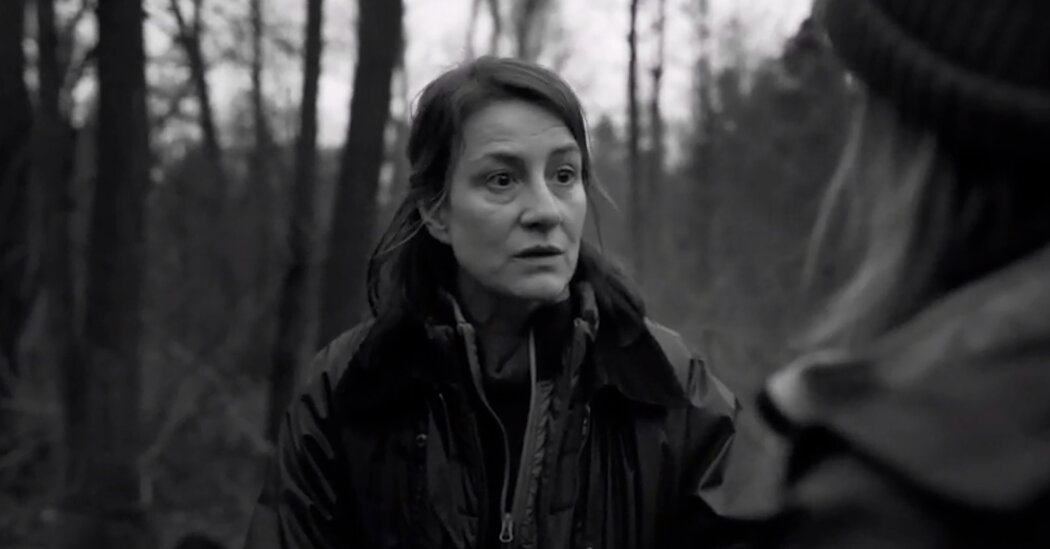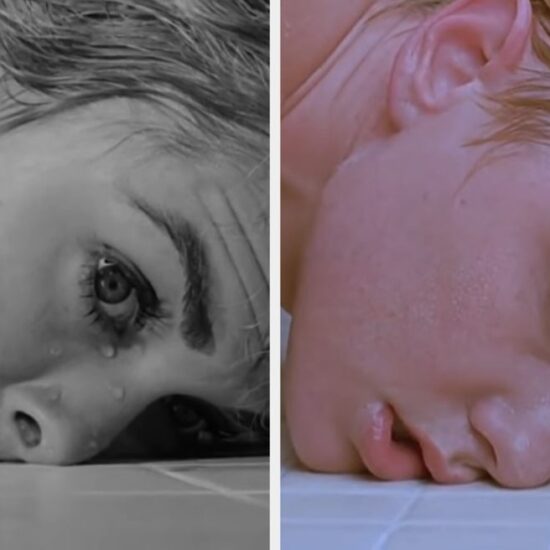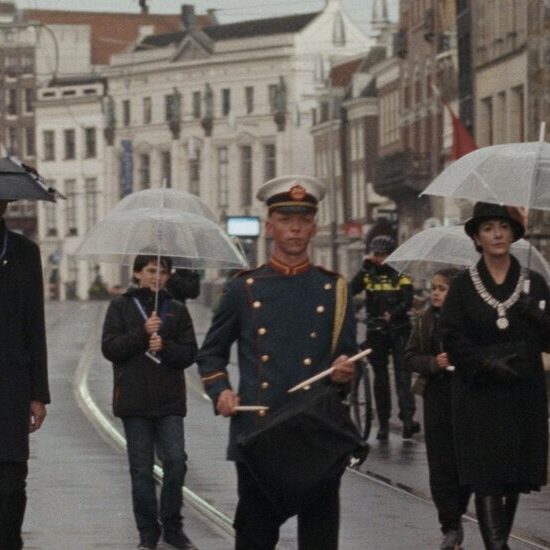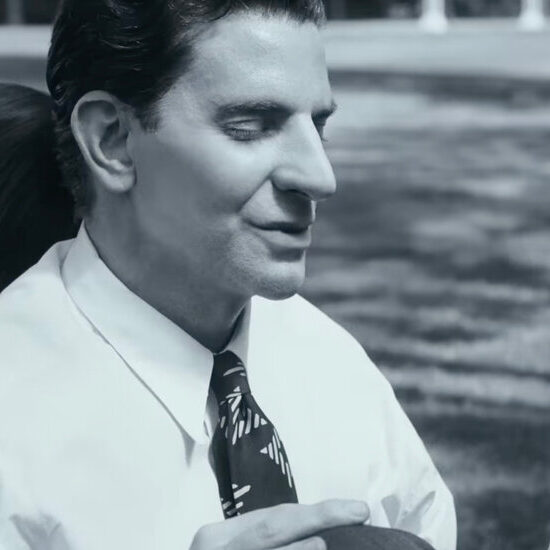
“If you are on the sensitive side, please take your Kleenex out,” the Polish filmmaker Agnieszka Holland warned the audience Tuesday at the Toronto International Film Festival. Holland was trying to prepare us for her latest, “Green Border,” a great howl of a movie about the crisis at the border between Poland and Belarus. There, migrants largely from the Middle East have become pawns in what European Union officials have called a “hybrid war,” a conflict that she dramatizes with formal rigor, deep feeling and palpably restrained outrage.
Holland said that she only began shooting “Green Border” at the end of March, a remarkably brief timeline for a movie on this scale. “We made it with a lot of passion and urgency,” she said, qualities that infuse every minute of this mostly black-and-white nail-biter. Divided into chapters, it shifts among characters — a Syrian family with kids, a Polish guard, ministering activists — swept up in the crisis. Although her focus remains fixed on the human stakes, Holland sketches in the larger geopolitical context even as she also looks to the past, notably in the forest images of frantic, terrified people that evoke the Holocaust.
Holland’s honesty has made her a target in her home country, with Poland’s hard-line justice minister, Zbigniew Ziobro, likening “Green Border” to Nazi propaganda. This has prompted the 74-year-old Holland — whose father was Jewish and whose mother was in the Polish underground — to consider legal action. “We want to see ourselves as a just and right people, victims and heroes, but never perpetrators,” she said after Tuesday’s screening. “The violence against the refugees is not a Polish specialty,” adding that she didn’t make the movie to be against anyone but to be “for humanity and for sisterhood and brotherhood.”
“Green Border” was one of the highlights of the festival, which in its 48th edition remains among the fall’s essential industry convocations. That was still true this year, even if the crowds during the event’s first half, which is when industry types like to descend, were thinner than usual. The most likely reasons were rising Covid cases and the strikes by the Writers Guild of America and SAG-AFTRA, which dimmed the festival’s starry quotient and meant fewer people overall. Every red-carpet appearance involves entire ecosystems, from handlers to hair and makeup artists, which left directors like Richard Linklater — here with “Hit Man” — to joke before his festival premiere that “everybody’s stuck with me.”
It was a pleasure, Mr. Linklater. One of the most enjoyable, tonally pitch-perfect movies of his recent career, “Hit Man” centers on a professor (Glen Powell) who inadvertently becomes a phony contract killer, a new identity that allows Linklater to play with questions of the self while riffing on noirs like “Out of the Past” with laid-back wit. The movie was one of a handful of comedies at the festival that also included cheerfully pandering entertainments like Taika Waititi’s “Next Goal Wins” with Michael Fassbender (about a lovable losing soccer team that — spoiler! — triumphs) and Jessica Yu’s “Quiz Lady” (a tale of self-discovery that’s basically a feature-length joke rally between Awkwafina and Sandra Oh).
One of the draws of the Toronto festival isn’t just its size and scope, with a lineup that includes hundreds of movies from across the globe, but also the variety of its offerings. In contrast to, say, the hothouse atmosphere of Cannes, an art-film showcase for established and newly anointed auteurs, Toronto embraces abundance as an ethos, a strategy that in part seems intended to fill as many seats as possible. To that end, while the festival has its share of art films — programming numerous critical favorites from Cannes, Berlin, etc. — Toronto also invites the kind of sturdy genre fare and middlebrow titles that would never make the cut at a more self-consciously prestige event like the New York Film Festival.
That has always made it difficult to identify an overarching programming sensibility at Toronto, but it also makes the event a reliable gauge of the state of the art and industry. And there’s a lot of good, really good and excellent movies to look forward to this year and next, including Alexander Payne’s wistful, nuanced comedy “The Holdovers.” Opening shortly before Christmas 1970 and set at a Massachusetts boarding school for boys, it centers on a teacher, a cook and a student — beautifully played by Paul Giamatti, Da’Vine Joy Randolph and Dominic Sessa — who discover one another and something about themselves over the course of a lonely, eventful holiday break. It’s lovely and one of the finest of Payne’s career.
I’m still mulling over “American Fiction,” a biting, often caustically funny satire from Cord Jefferson about an unhappy (and underselling) writer, Monk (Jeffrey Wright), who, in a moment of dyspepsia tinged with despair, decides to write a fake memoir that embraces crude racial stereotypes. He submits it under a pseudonym, which leads to expected complications, a lot of smiling white people and some pointed soul-searching about matters of race and representation. Wright is predictably one of the movie’s strengths and it’s especially nice to see him in a leading role that allows him to be by turns spiky, vulnerable and sexy.
Michael Keaton’s darkly comic thriller, “Knox Goes Away,” and Viggo Mortensen’s moving western, “The Dead Don’t Hurt,” don’t try to reinvent their genres, which is more than fine. Shortly after “Knox” opens, Keaton’s titular character is diagnosed with a fast-moving dementia, which is terrible and proves especially problematic given that he’s a contract killer. Set in the mid-19th century, “The Dead” is a heart-heavy story about two immigrants — played by a tender, well-matched Mortensen and Vicky Krieps — whose lives are undone when he sets out to fight in the Civil War. When his character rides off, Mortensen makes his intentions clear by keeping his camera steadily fixed on Krieps.
There were, of course, some unfortunate selections — oh, Harmony Korine! — but I rarely walked out of a movie. I even made it all the way through Korine’s “Aggro Dr1ft,” 80 minutes of guns, poses and bouncing booty about a hit man (Jordi Mollà) who seems to be experiencing an existential meltdown, which doesn’t stop him from blowing people’s brains out. The meltdown may explain why the striking visuals — the movie owes its look partly to thermal imaging — suggest a color Xerox that was left out in the rain so the colors would bleed; the movie plays like it was made by someone who spent too long in lockdown with a lot of violent video games, a stack of Michael Mann Blu-rays and a hefty bag of hallucinogens.
I appreciate that Korine is trying something different, but the almost willful lack of ideas in “Aggro Dr1ft” and his commitment to juvenile genre clichés and troll-worthy images of women — however self-aware or, at least, self-amused — quickly grows tedious. A festivalgoer looking for something really different would have been better off sampling selections in this year’s very strong Wavelengths lineup, which included Chantal Akerman’s earliest films, made when she was a teenager; a ravishing musical short from Pedro Costa, “The Daughters of Fire”; and the last movie from Jean-Luc Godard, “Trailer of a Film That Will Never Exist: Phony Wars.” Named in honor of the filmmaker Michael Snow, who died in January, Wavelengths consistently offers selections that transcend ideas about what movies can and should be.
Among my favorite Wavelengths offerings was “Shrooms,” 18 minutes of color and joy from Jorge Jácome that opens with a young man foraging for magic mushrooms in woods outside Lisbon. The movie isn’t formally radical; it’s attractive, elliptical, pleasantly drifty, and when the forager holds a mushroom up to the light, a subject-appropriate spectrum of vivid colors appears. It’s more of a meditation than a documentary in the fashion of Errol Morris’s engaging, feature-length sit-down with John le Carré in “The Pigeon Tunnel.” The most far-out thing about “Shrooms,” which may have even more pigeons than Morris has in his doc, is that in “Shrooms” the birds are used to deliver the forager’s goods. “Is this for real?” I excitedly whispered to the programmer Andréa Picard, who replied yes as the pigeons took flight and delivered me a perfect contact high.













